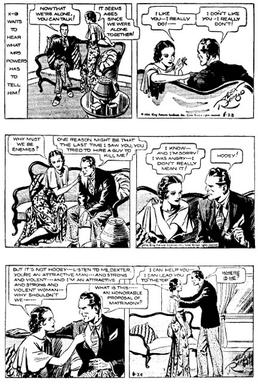Chances are that no United States government agency has been as media conscious as J. Edgar Hoover’s Federal Bureau of Investigation. Hoover probably spent more time obsessing over his operation’s public image than he did in solving crimes. During the Depression era, as his agents won fame in shootouts with gangsters like John Dillinger, Hoover become ever more preoccupied with a simple public relations problem. What should his law enforcement organization be called?
Through the 1920s and early 1930s, letterhead for the outfit used a variety of names: the Division of Investigation, the Bureau of Investigation, and the U.S. Bureau of Investigation. It was called “Division” for most of these years because the agency operated (and still operates) under the jurisdiction of the Department of Justice. In his terrific book, J. Edgar Hoover: the Man and the Secrets, Curt Gentry attributes the transition to its present name to a radio show sponsored by the American Tobacco Company. The bureau had approved a character in the program named special agent “K-5.” But then the Hearst newspaper chain syndicated a cartoon strip with a figure named “Secret Agent X-9.”* That aroused Hoover’s ire.

Written by Dashiell Hammett and drawn by Alex Raymond, Secret Agent X-9 worked for some vaguely referred to government agency, fighting baddies wherever they raised their ugly heads. Hoover was certain that if the Bureau or Division or whatever it was had a more recognizable name, pop culture producers would defer to that moniker in their creations. It was in that context that one of his staff came up with the simple addition of the word “Federal” to “Bureau of Investigation.” Hoover remained skeptical until he was told that the initials also stood for “Fidelity, Bravery, and Integrity.” (Conspiracy theorists take notice: Masons frequently use these terms in their rituals). This sold him on the choice.
But Hoover still remained suspicious of Secret Agent X-9, not surprising, since writer Hammett was long associated anti-fascist movements and joined the Communist Party in 1937. He ordered an extensive probe of the strip. “The investigative agent reported back to Hoover that in his opinion, the comic strip was ‘not subversive’,” Gentry concludes. The Division of Investigation officially became the FBI in 1936. X-9 soon morphed into a radio show and then a movie series. It posted its last strip episode in 1996.
*Gentry’s book misidentifies the show as “Special Agent X-9.”


